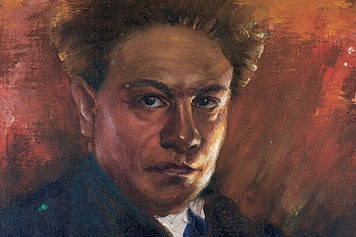
Ottorino Respighi
Feste Romane
PROGRAM NOTES & COMMENTARY
Feste Romane
Genre: Symphonic; Country: Italy
Period: 20th century
Completed in 1928
First performance: February 23, 1929, New York (Arturo Toscanini, Conductor)
In this symphonic poem Respighi completed the “cycle” (as he called it) of Roman impressions that began with Fountains of Rome (1916), followed by Pines of Rome (1924). In the first, the composer himself explained that it “sought to reproduce, by means of tone, impressions of certain natural aspects of the Eternal City”; in the second, he “resorted to nature as a point of departure in order to recall memories and visions”; and in the third, Feste Romane, completed in 1928, he gives us “visions and evocations of Roman fétes” (festivals). The first performance took place in New York with the New York Philharmonic conducted by Arturo Toscanini.
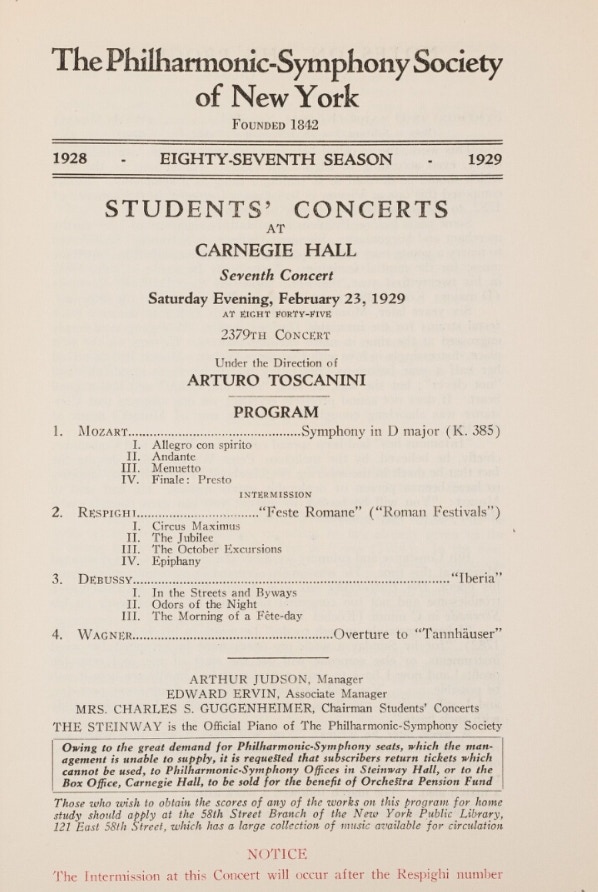
The original program from the world premiere of Feste Romane in 1929
The work is scored for an enormous orchestra, and employs almost every variety of instrument that may be pressed into orchestral service (including the mandolin). Feste Romane opens with a journey into the ancient Roman world and its grand circuses. Respighi sets the tone in the first movement at the Circus Maximus, once the world's largest stadium, boasting a capacity of 150,000 spectators. Today, only a few venues come close: North Korea’s Rungrado 1st of May Stadium holds 114,000, Michigan Stadium in the U.S. accommodates 107,601, and Australia’s Melbourne Cricket Ground seats 100,024. None match the monumental scale of the Romans!
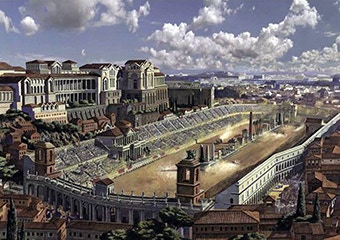
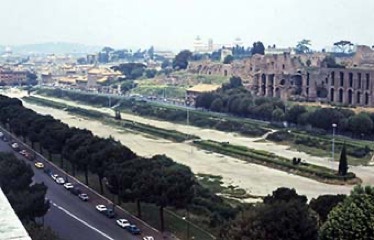
The Circus Maximus recreated
The Circus Maximus in 1978
Respighi annotated each movement with his own detailed notes. For the first movement, he described it as follows: "Circus Maximus – a menacing sky looms over the Circus Maximus, yet it remains a day of celebration for the people: Ave Nero! The iron gates are flung open, and the strains of a sacred song blend with the howls of wild beasts. The audience rises in a frenzied uproar. Unwavering, the hymn of the martyrs swells in power, triumphs, and is eventually swallowed by the tumult." Through his exceptional skill in orchestration, Respighi paints such a vivid auditory picture. Notably, the mention of the martyrs highlights the religious facet of Rome that unfolds in the subsequent movements.
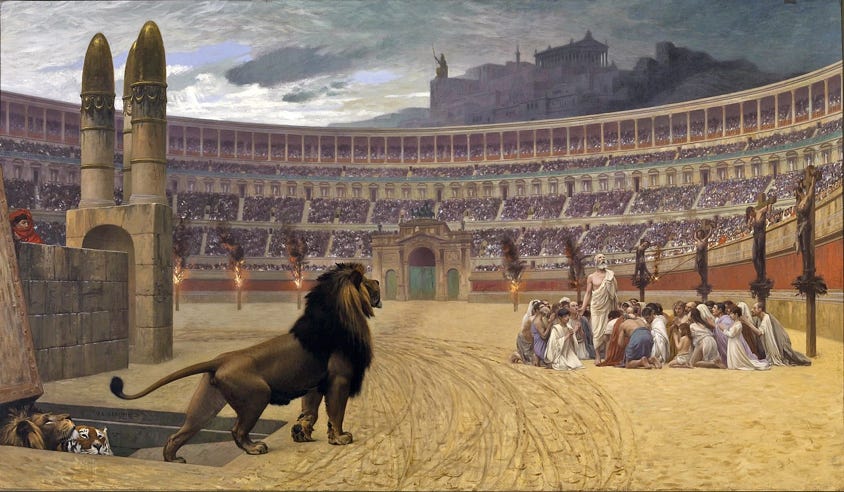
The Christian Martyrs’ Last Prayer, by Gérôme (1883)

The hymn of the martyrs in mvt. 1
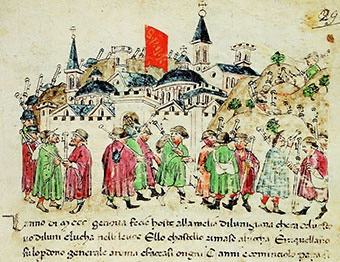
Movement 2: “Il giubileo” —The Jubilee is the time when the Catholic Church, from its seat in Rome, grants a year of dispensation and universal pardon. Pilgrims flock to Rome to visit all the churches. Respighi describes it as: ‘Jubilee – pilgrims trail down the long road, praying. Finally, from the summit of Monte Mario appears to ardent eyes and gasping spirits the holy city: Rome! Rome! A hymn of praise bursts forth, the churches ring out in reply.’

The Pilgrims’ Chant as they approach Rome in mvt. 2
For the third movement, the season of fall comes alive with a jubilant celebration. The vineyards of the Castelli Romani, just 20 km from Rome, overflow with the rich Frascati wines that have long been a symbol of the region. Respighi himself captures the magic, proclaiming, “October Festival – it is the October wine harvest in the Roman Castelli covered with vines; echoes of the hunt, tinkling bells, songs of love. Then in the tender twilight arises a romantic serenade on the mandolin.” Here, in the embrace of autumn, every delight converges—feasting, toasting, and singing in a vibrant tapestry of life.
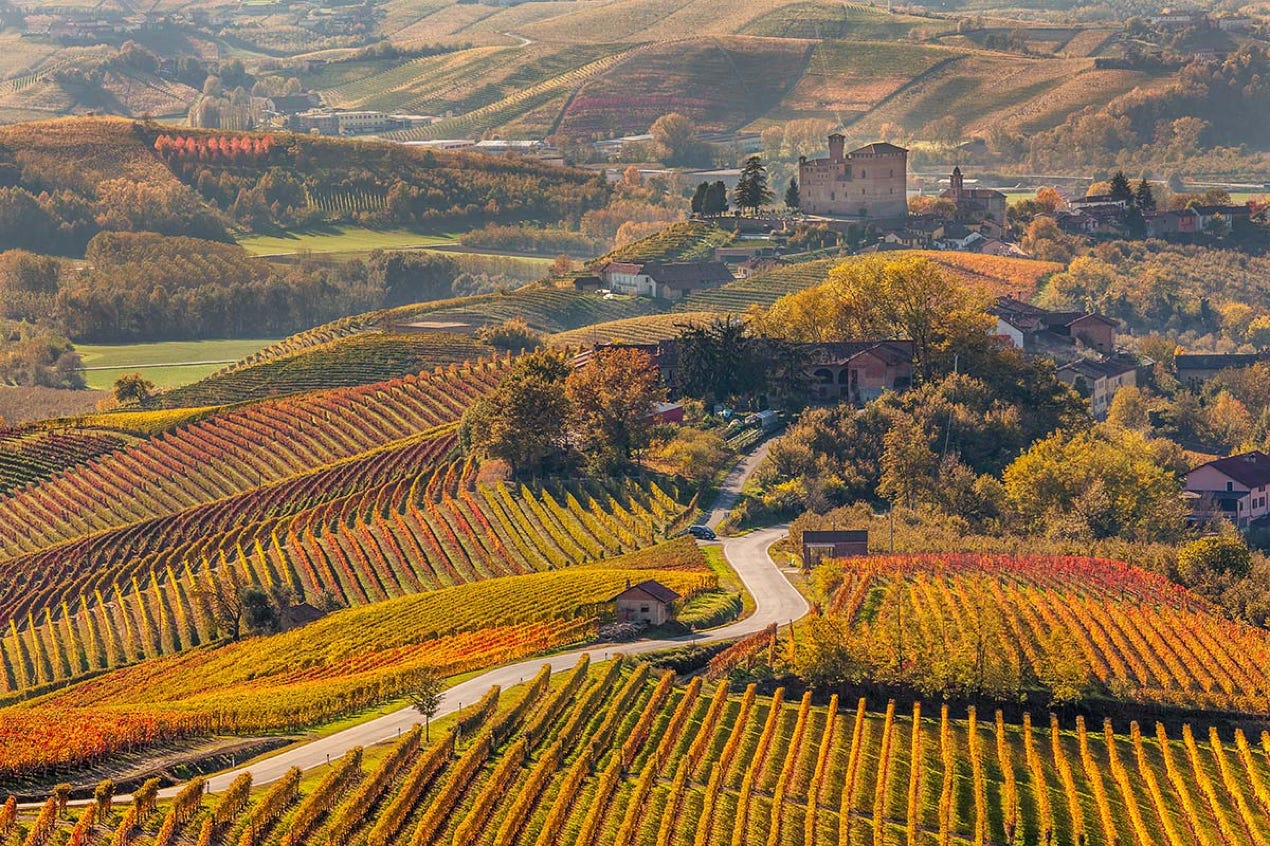
Autumn in Italy
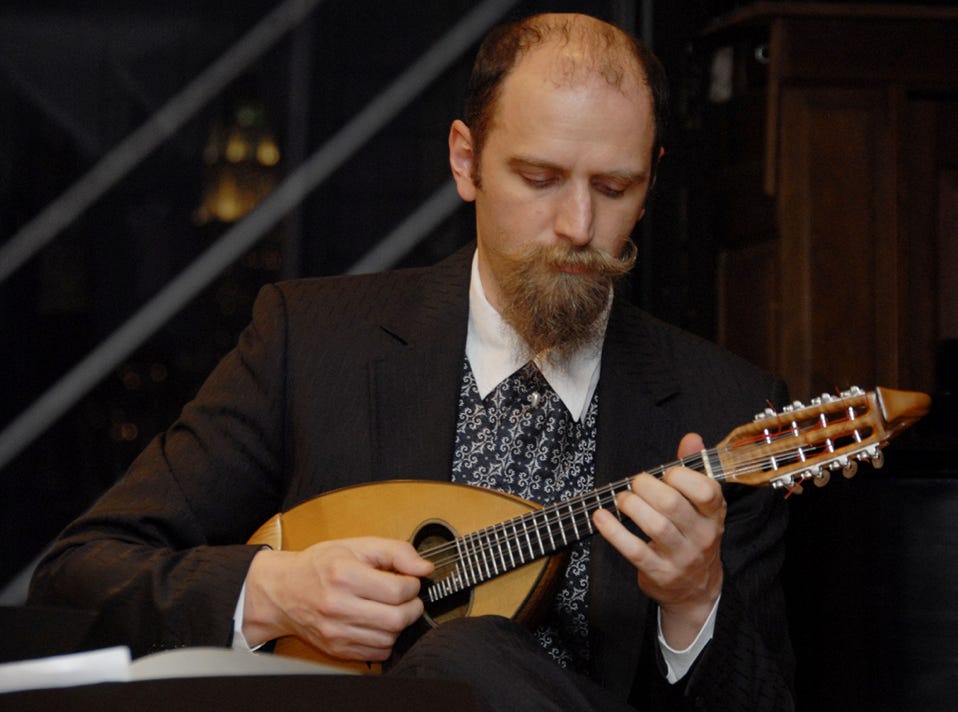

The famous (and rare) mandolin solo in mvt. 3
Final movement: “The Epiphany” —On January 6th, Epiphany bursts onto the scene as a cornerstone of Christian celebration, marking the moment—just 12 days after Jesus’ birth—when the infant is hailed as God incarnate. Whether you call it Twelfth Night, Three Kings’ Day, or Little Christmas, it’s a day that sparkles with joy and tradition.
Imagine the vibrant chaos described by Respighi: it’s the night before Epiphany in the bustling Piazza Navona, where the rhythmic blare of trumpets sets the pace for a festive frenzy. Amid the lively hubbub, you catch the rustic melodies, the playful saltarello cadenzas, the cheerful strains of a barrel organ tucked away in its booth, and the rousing call of a street barker. All these sounds blend into a spirited stornello that boldly declares, “Lassatece passa, semo Romani!” (‘We are Romans, let us pass!’)—a proud shout of Roman identity and exuberance. This final movement is one of the most thrilling and energetic endings in the entire orchestral repertoire.
An absolutely stunning performance of the final movement of Feste Romane by the National Youth Orchestra of Great Britain, conducted by Vasily Petrenko. This is a must-watch video!!
Epiphany at the Piazza Navona
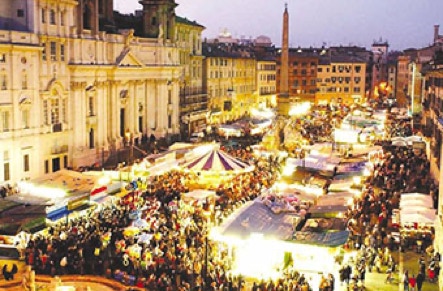
POSTLUDE:
Respighi’s Music After Feste Romane
As mentioned in the Q&A section, Feste Romane was the work that Respighi deemed the pinnacle of his grand orchestral creations. After completing the piece, he felt he had achieved the utmost in orchestral sonority and color, and as a result, he no longer felt the need to produce such expansive works. Instead, he shifted his focus toward compositions for smaller ensembles. Among these were The Birds, also completed in 1928 and inspired by Baroque pieces that mimicked bird calls; the widely popular Ancient Airs and Dances Suite No. 3 (1932), arranged solely for strings; and the Concerto a cinque (Concerto for Five) (1933), scored for oboe, trumpet, violin, double bass, piano, and strings. In a sense, Respighi can be included in the Neo-Classical movement of the 1920s and 1930s, alongside such composers as Stravinsky, Ravel, Hindemith, Prokofiev, and composers of Les Six (notably Poulenc, Milhaud, and Honegger). Offered below is the first movement of Respighi’s The Birds, composed in 1928 (but after Feste Romane. It is a completely different world than the soundscapes of Feste Romane!
Gli uccelli (The Birds) Prelude
Lorem ipsum dolor sit amet, consectetur adipiscing elit. Aliquam tincidunt lorem enim, eget